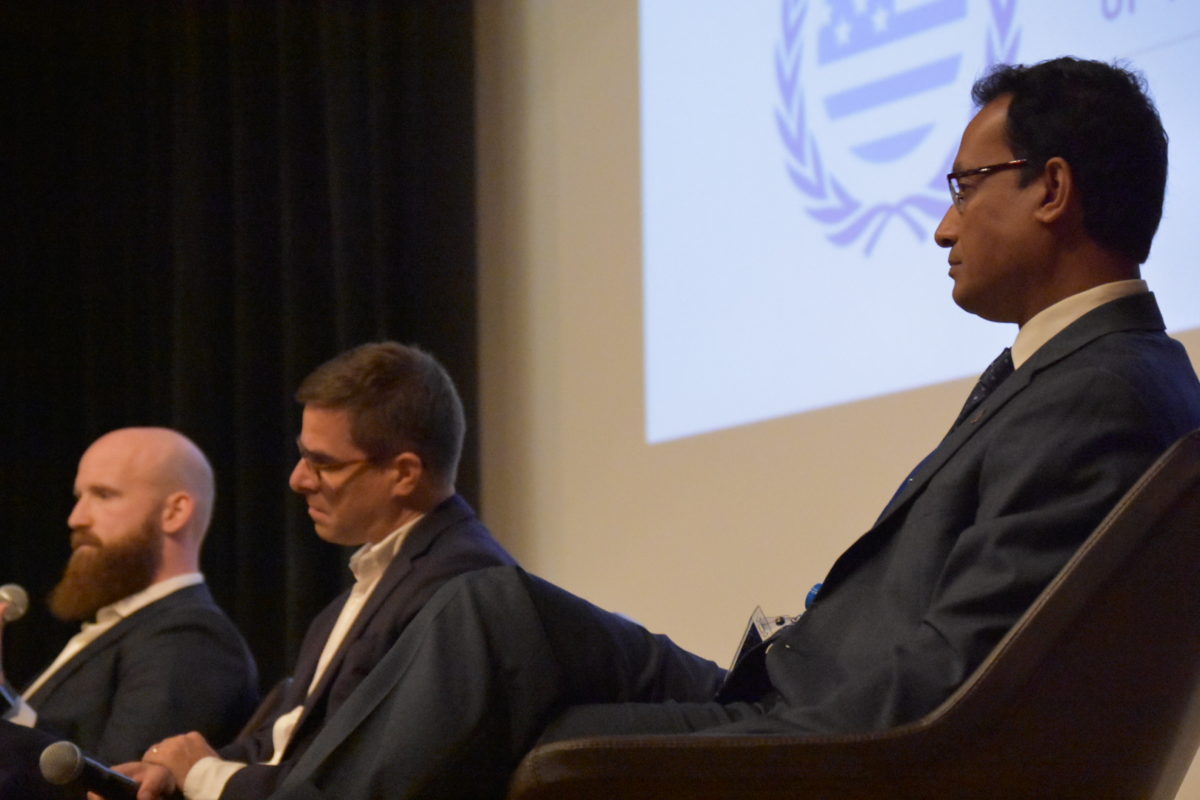A previous version of this article misstated who can attend the climate strike. Any student, staff, or faculty that attends the strike will not be penalized for missing class.
A week before the Global Climate Strikes surrounding the UN Climate Action Summit begin, the Zolberg Institute at the New School hosted the United Nations Association of New York to discuss climate migration. Under the title “Where Can They Go
As climate change continues to alter the way humans inhabit the planet through floods and fires, people who live in vulnerable areas are being displaced. But climate migration is a global problem, happening everywhere from New Jersey to Bangladesh.
The discussion included Dakota Fisher, a former Louisiana state resilience program specialist, Kobi Ruthenberg, associate director of the architecture firm ORG Permanent Modernity, and Ambassador Tareq MD. Ariful Islam, the representitive of Bangladesh to the United Nations. Following the panelists were closing remarks from 14-year-old climate activist Alexandria Villaseñor, who founded Earth Uprising and co-founded the US Youth Climate Strikes.
People taking part in the New York City Climate Strike will meet in downtown Manhattan, in Foley Square on Sept. 20. A rally will start off a week of Global Climate Strikes, where adults and youth are skipping work and school to demand that the world’s leaders make drastic changes to slow down climate change at the UN Climate Action Summit on Sept. 23.
The Tishman Environment and Design Center at The New School is holding a rally in the Lang courtyard at 10 a.m. to gather and make signs before heading to Foley Square. The New School sent out a university-wide email that mentioned members of the community will not be penalized for skipping class or work if they choose to participate in Friday’s events.
Fisher narrowed in on the perils happening in Louisiana as it’s southeastern wetlands are diminishing rapidly due to flooding. As the citizens have less and less land to live on, Fisher assisted LA SAFE, which aims to help and rebuild the communities most affected by the rising waters. What makes it difficult for these communities to abandon the area is financial insecurity, thus Fisher took into account how environmental justice is a top priority to LA SAFE.
“We cannot put housing projects in a wetland, it is going to flood,” Fisher said.
Fisher relayed to the audience LA SAFE’s goals to make Loiusiana’s lower income communities more liveable as the coastline envelopes the southeastern region. One vital strategy touched upon was building affordable housing in areas that aren’t and won’t be affected by extreme flooding, keeping all residents secure in the face of climate change.
Following Fisher was Ruthenberg, an architect who helped in rebuilding the most damaged parts of New Jersey after Hurricane Sandy. Backed by President Obama in 2012, Ruthenberg was a key player in the Rebuild By Design initiative that focused on New Jersey’s industrial Meadowlands, located on the Hudson River just 30 minutes north of Manhattan. Although the initial rebuilding plan and it’s massive budget was cut down, Ruthenberg highlighted what it would take to have a coastal city that could withstand the extreme storms climate change has brought on.
“After Hurricane Sandy hit, there were long term plans to rebuild,” Ruthenberg said. “But the budget was an unfortunate outcome to us. This area has a well, debatable future”
Had the plans been given more financing, the Meadowlands would’ve been rebuilt upwards instead of outwards with natural barriers to protect the area from storms and flooding. Without this infrastructure, residents of the Meadowlands will see the same or even worse damage the next time a storm like Sandy occurs.

Ambassador Islam remarked on Bangladesh already having large displacement problems that are beginning to relocate 14 million people as climate change rages on. The catch is that Bangladesh is one of the world’s lowest carbon emitters, bearing the front of something they hardly contribute to. Instead of feeling hostile, the country is implementing ways to develop using as little carbon as possible. With hopes to get financial assistance from developed countries for cleaner energy instead of fossil fuels, Bangladesh has plans to lower their emissions 15 percent by 2030.
“We have to carry on with our own development journey, but mind our emissions while we do so, unlike the already developed nations,” Ambassador Islam said.
When the panelists concluded, Villaseñor took on the night to leave hope in the eyes of the audience.
The eighth grader had a lot to say about the inaction of policy makers on climate change, and how that affects her entire generation’s future. She turns her rage into activism, co-founding one of the most influential strikes happening right now and educating as many people as she can.
Villaseñor will join Greta Thunberg, a fellow youth climate activist, at the Global Climate Strike in New York. Villaseñor received a round of applause from the audience when she announced that the city of New York will excuse public school students who are skipping school to attend the climate strikes.
“Our future is at risk and we’re not stopping until it’s safe,” Villaseñor said. “I stay optimistic by thinking about what my future will look like when we win.”







